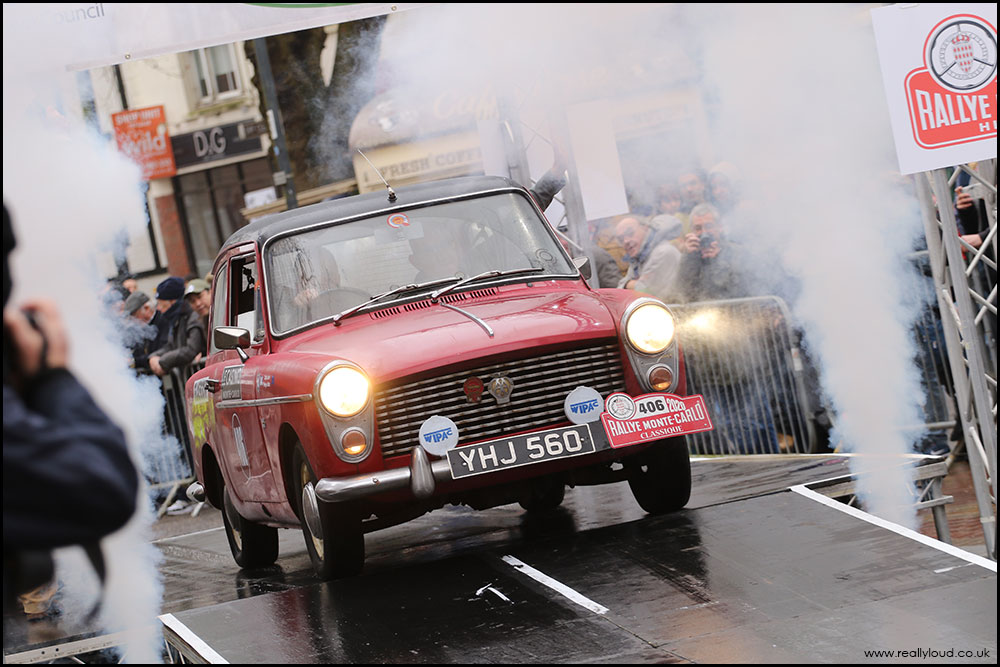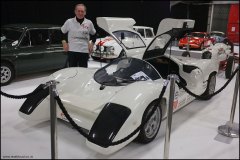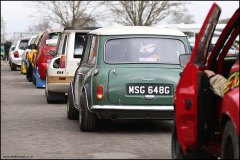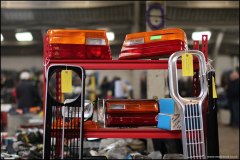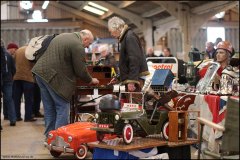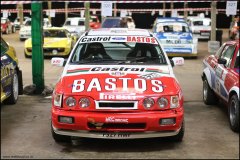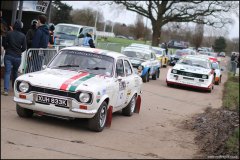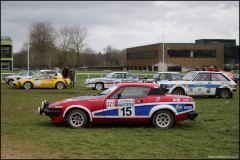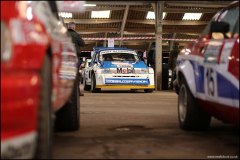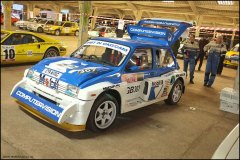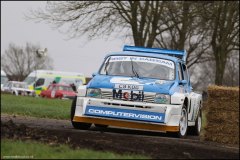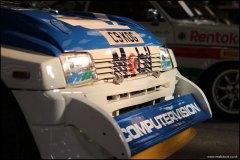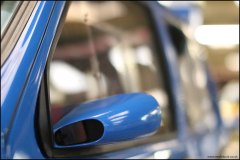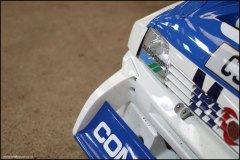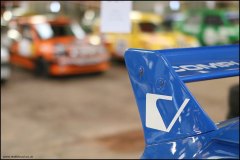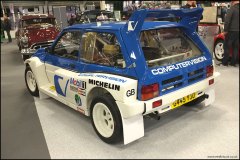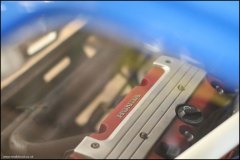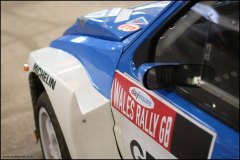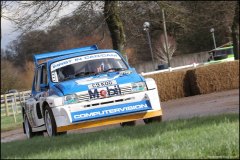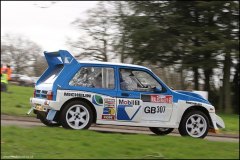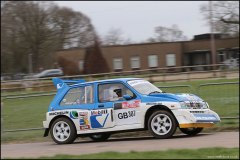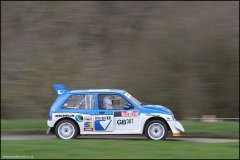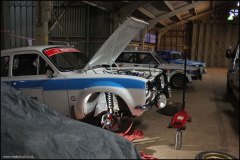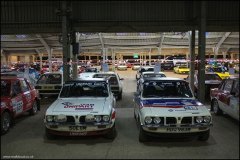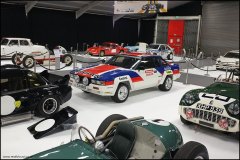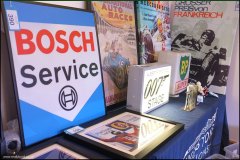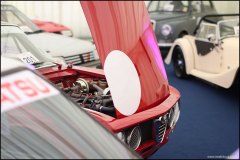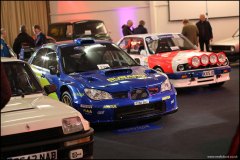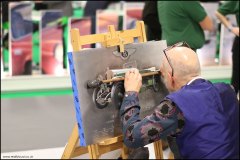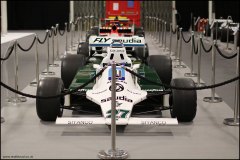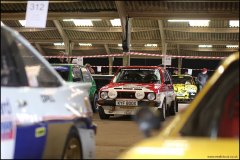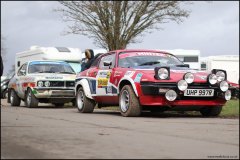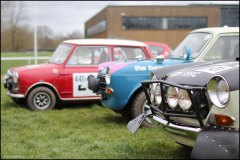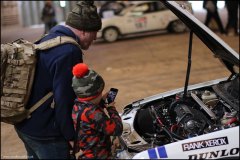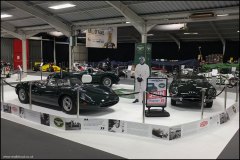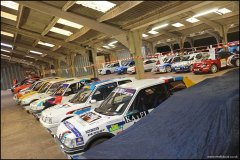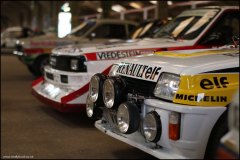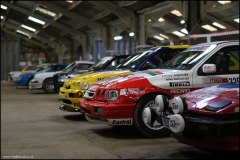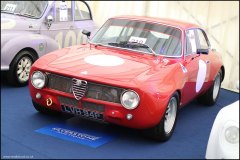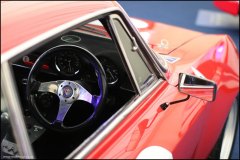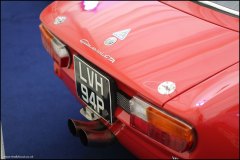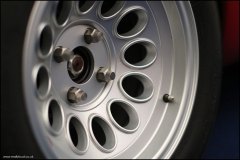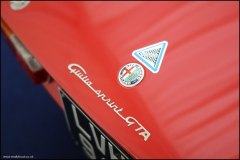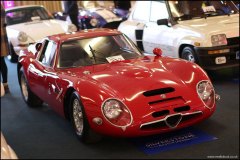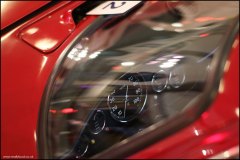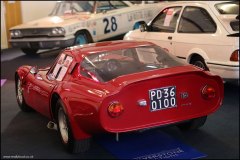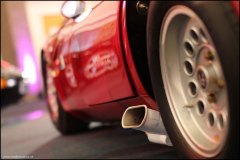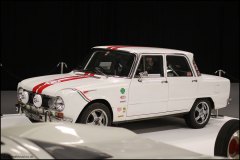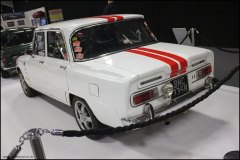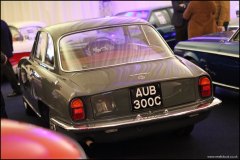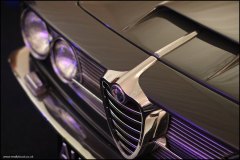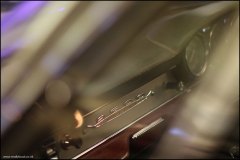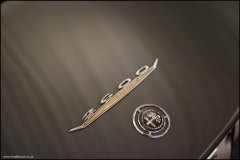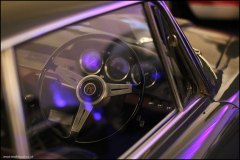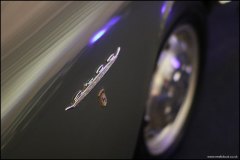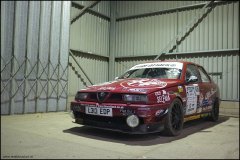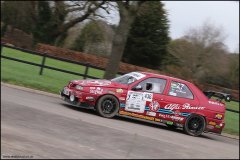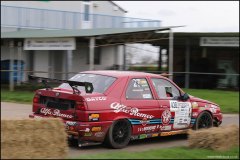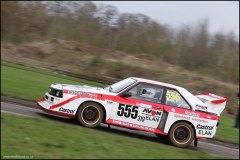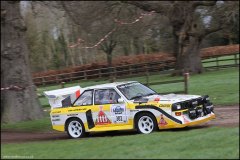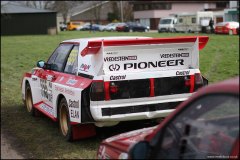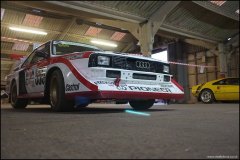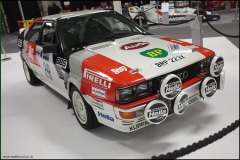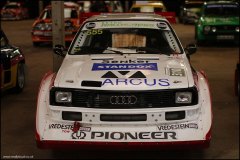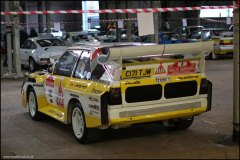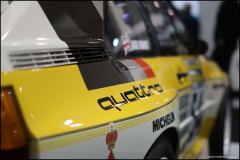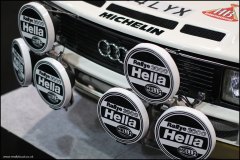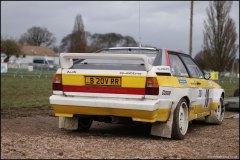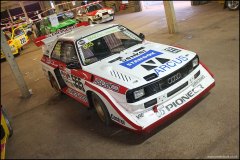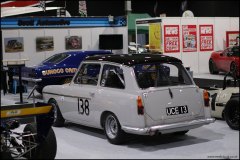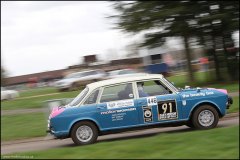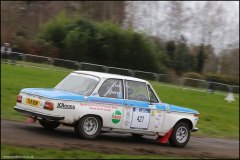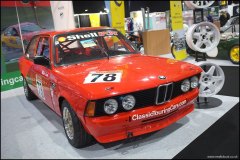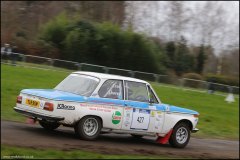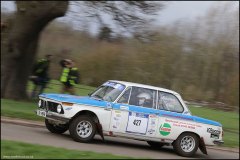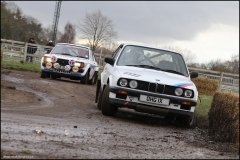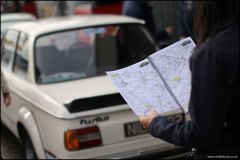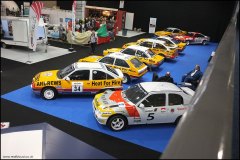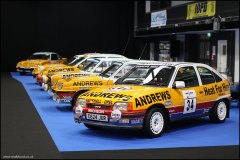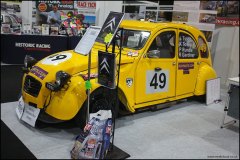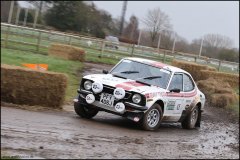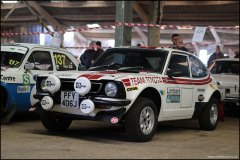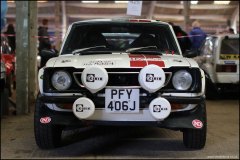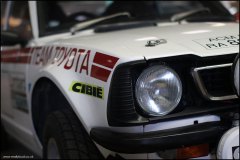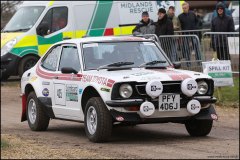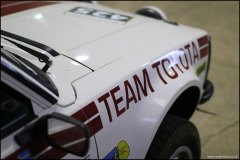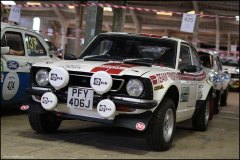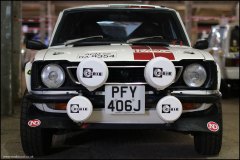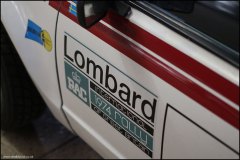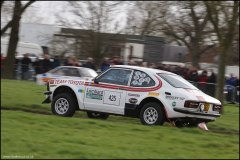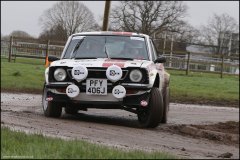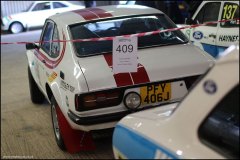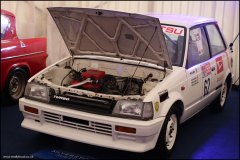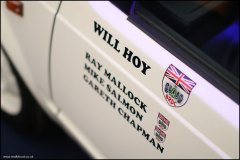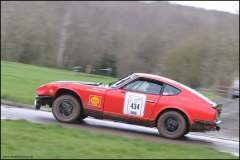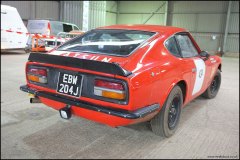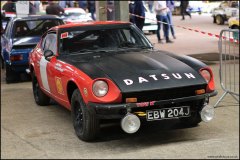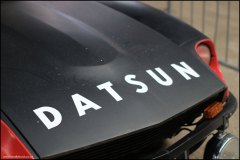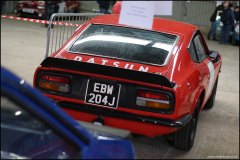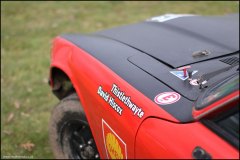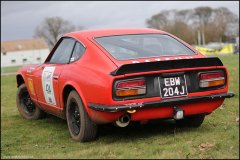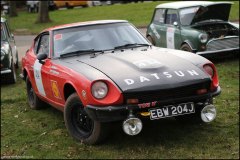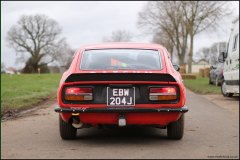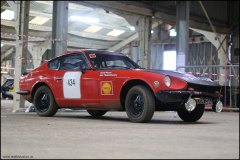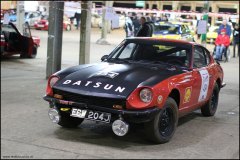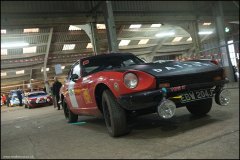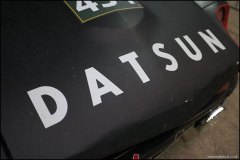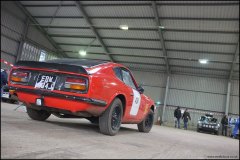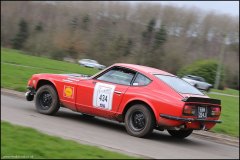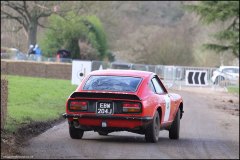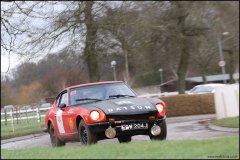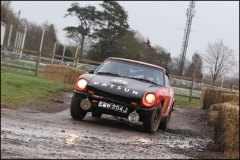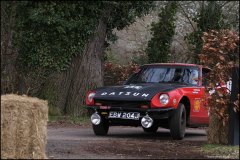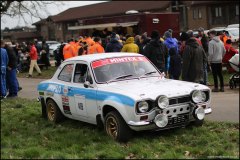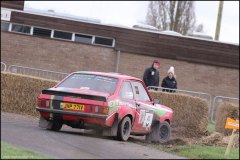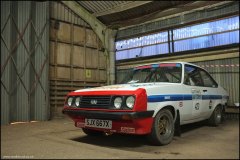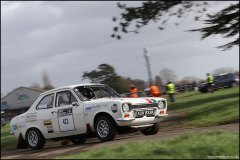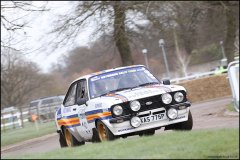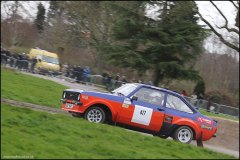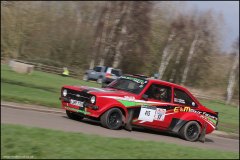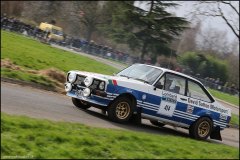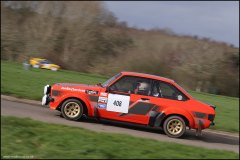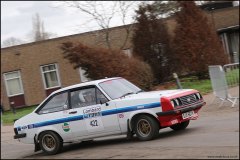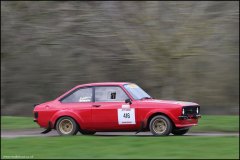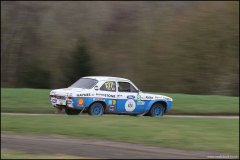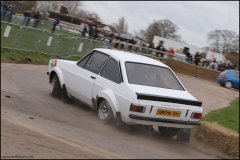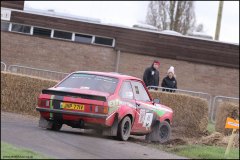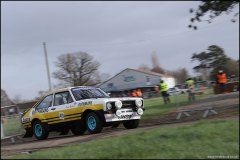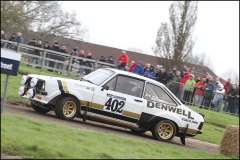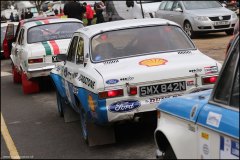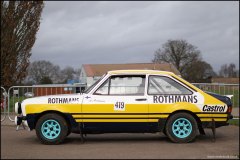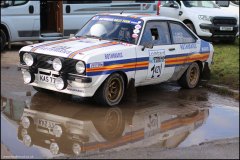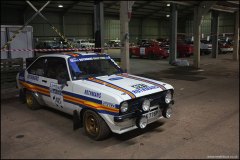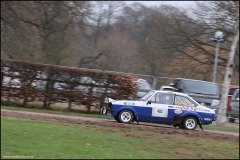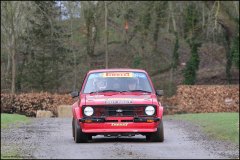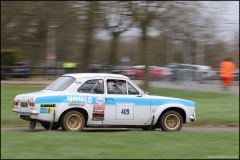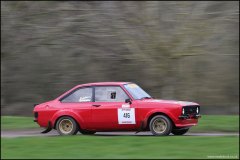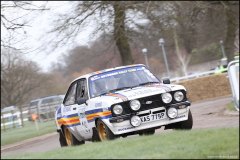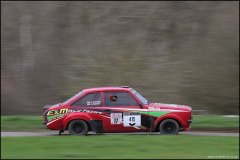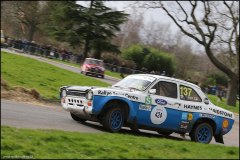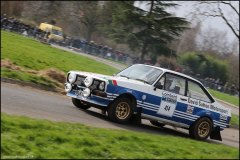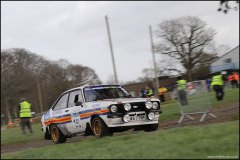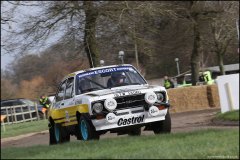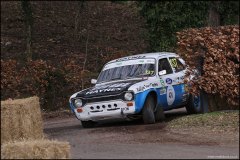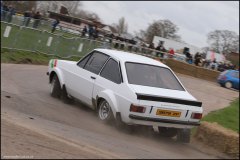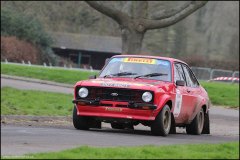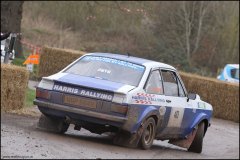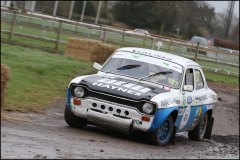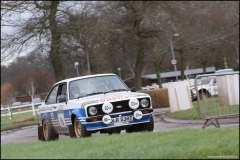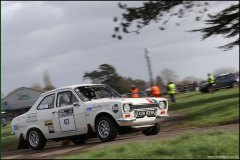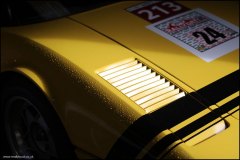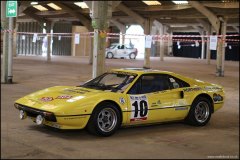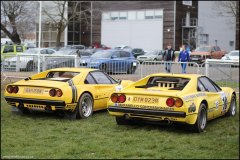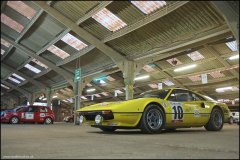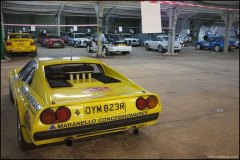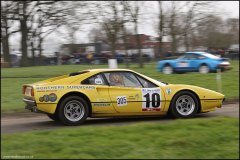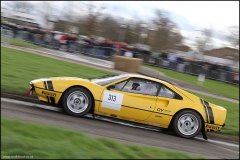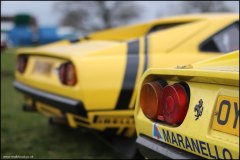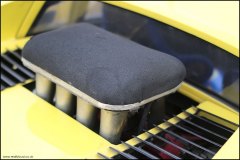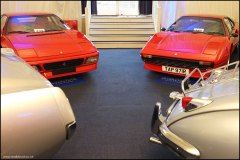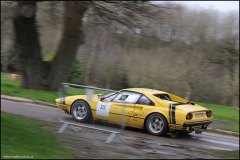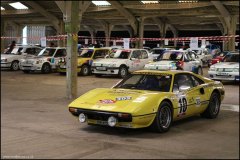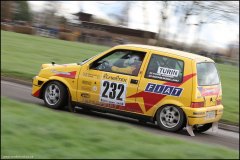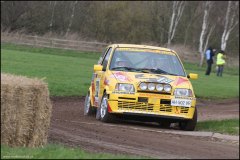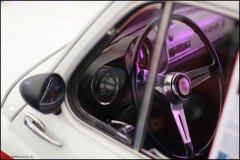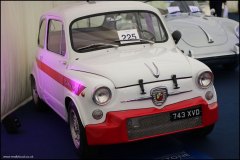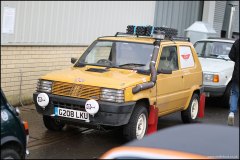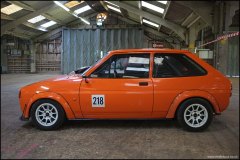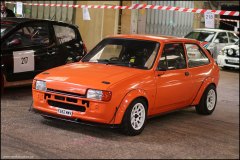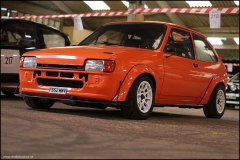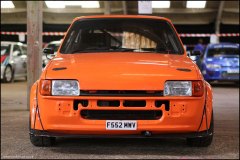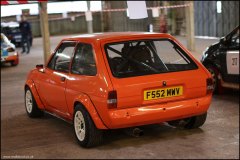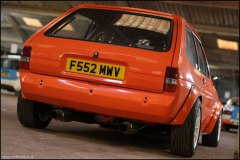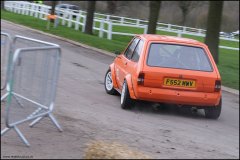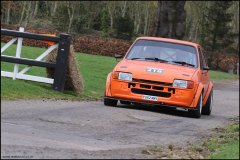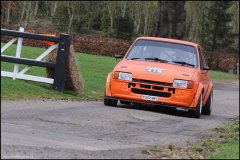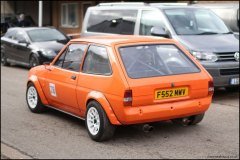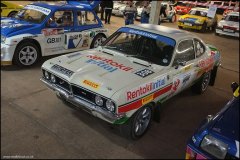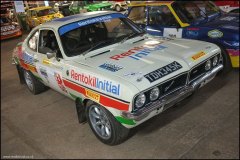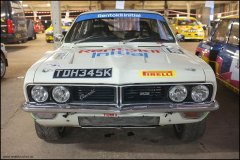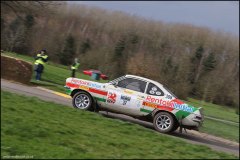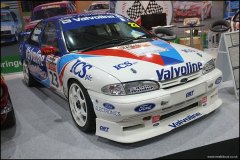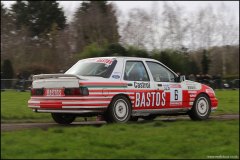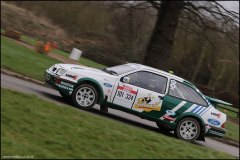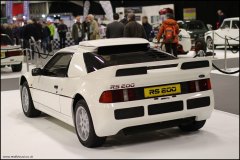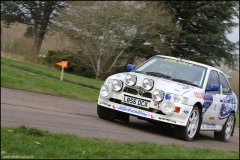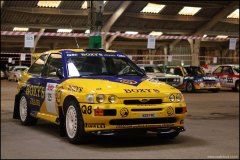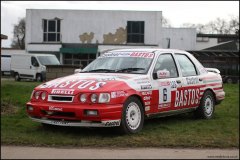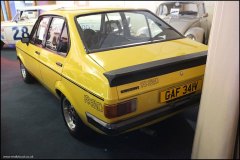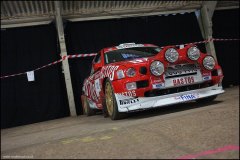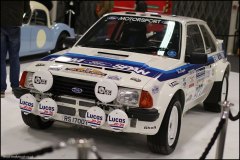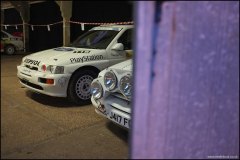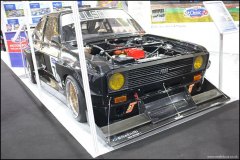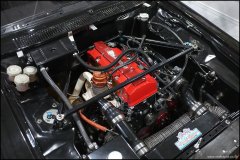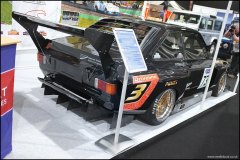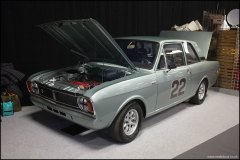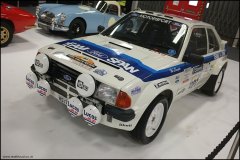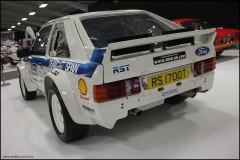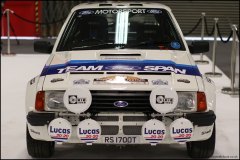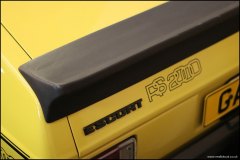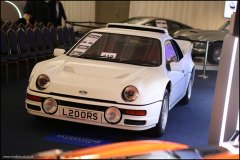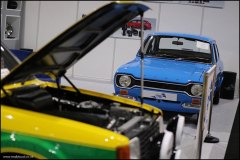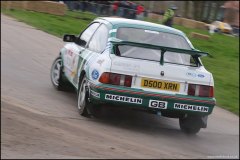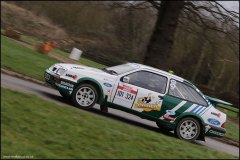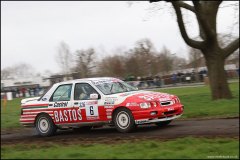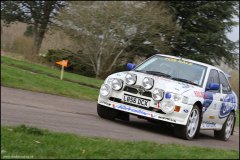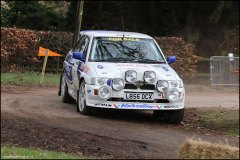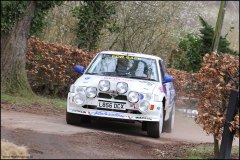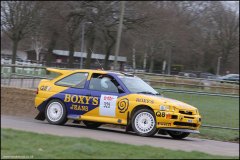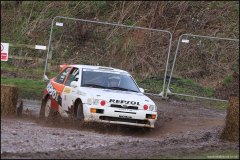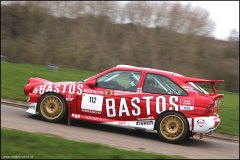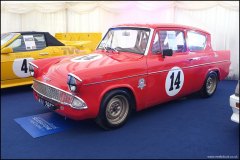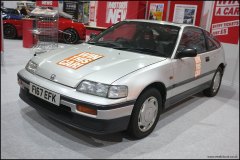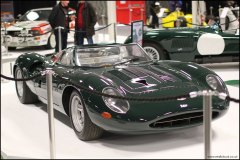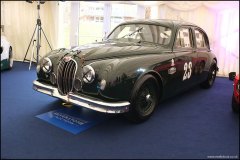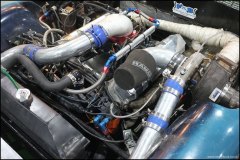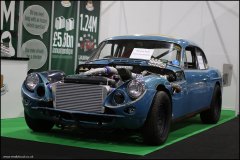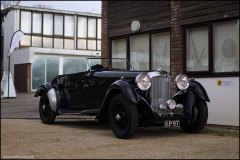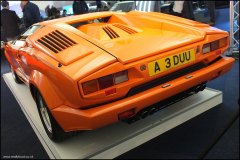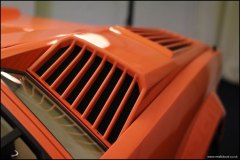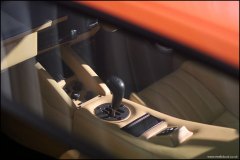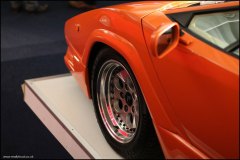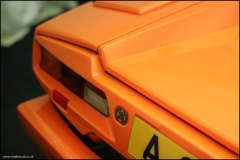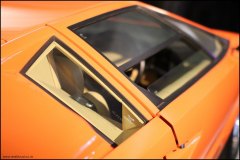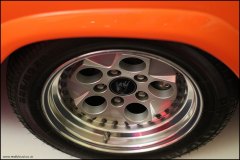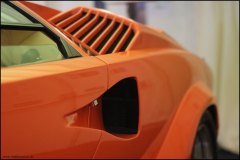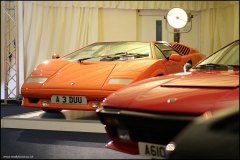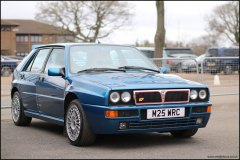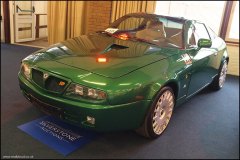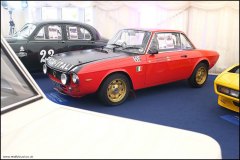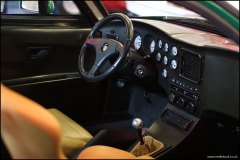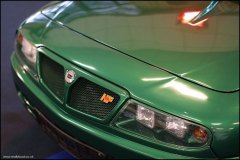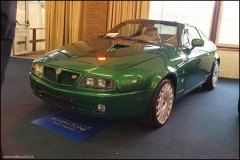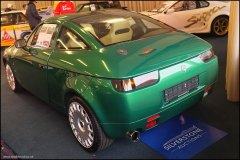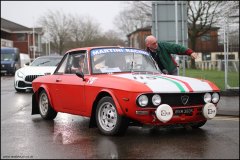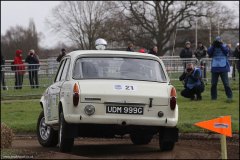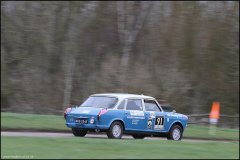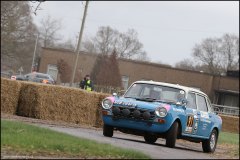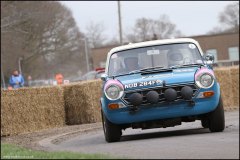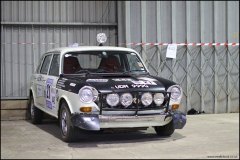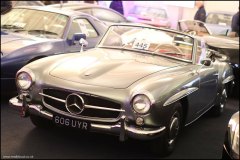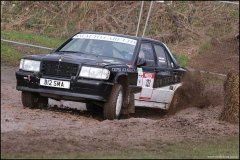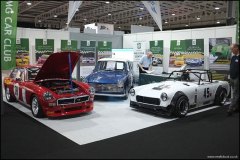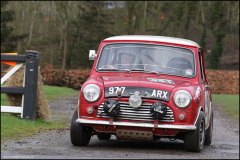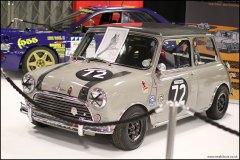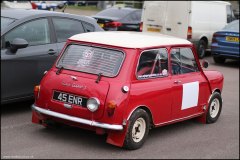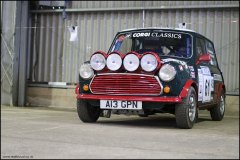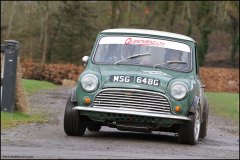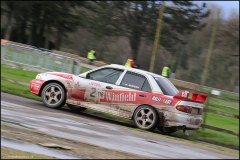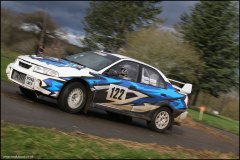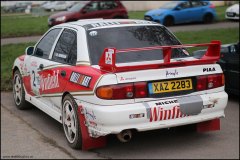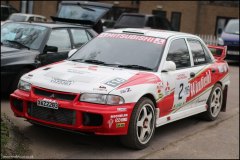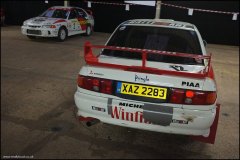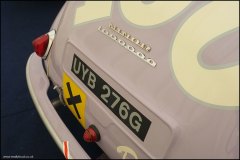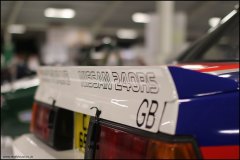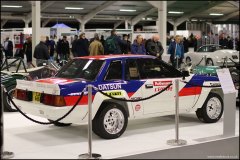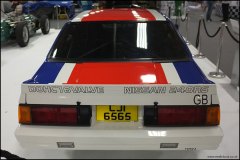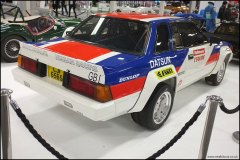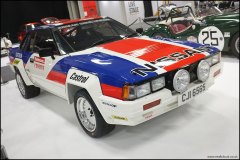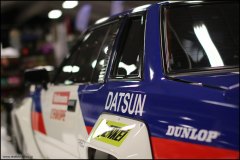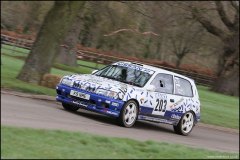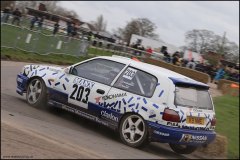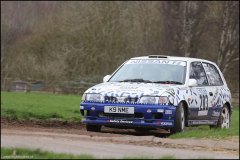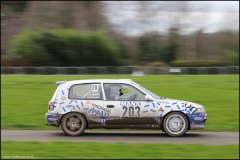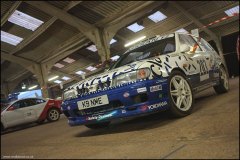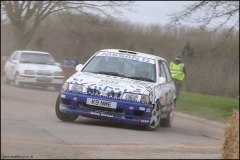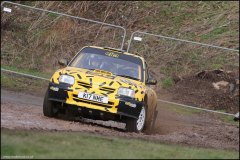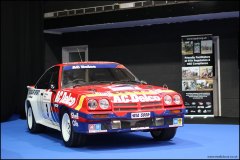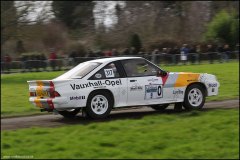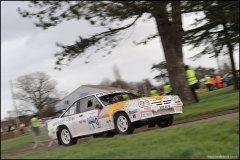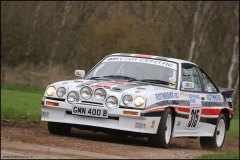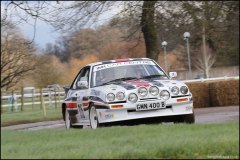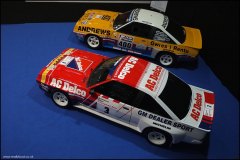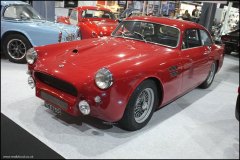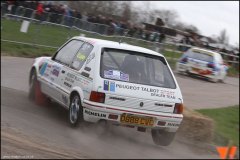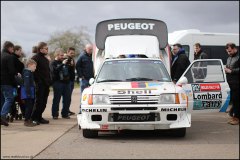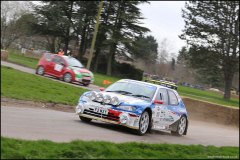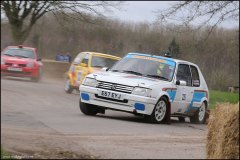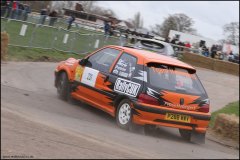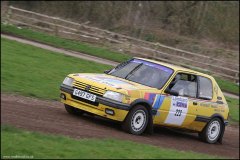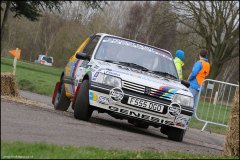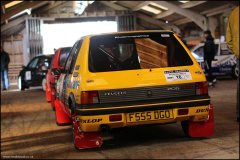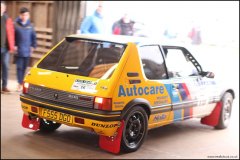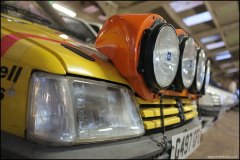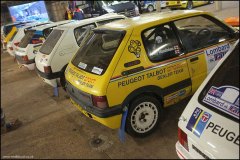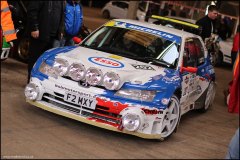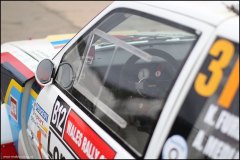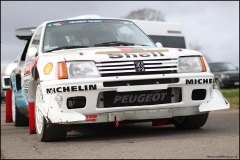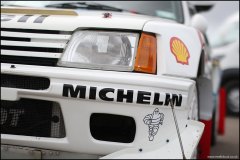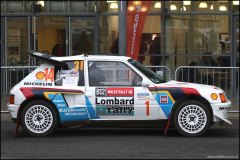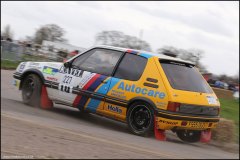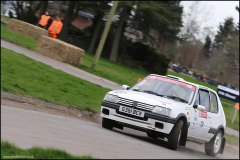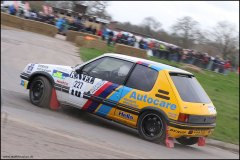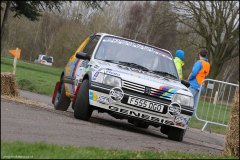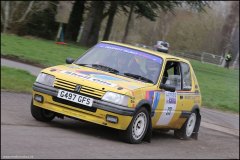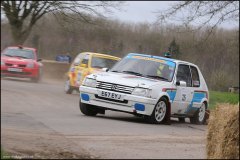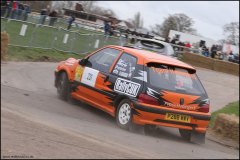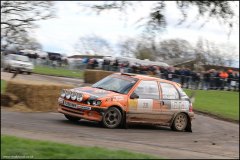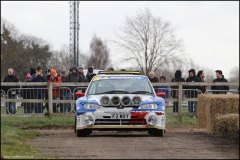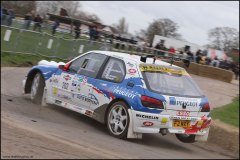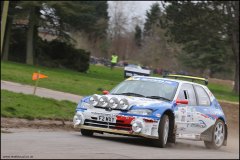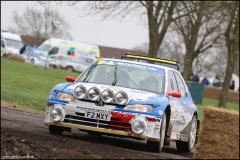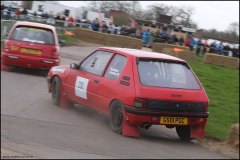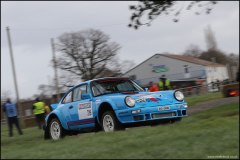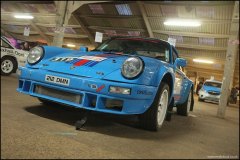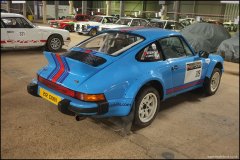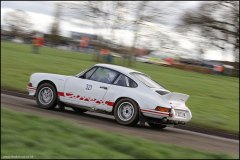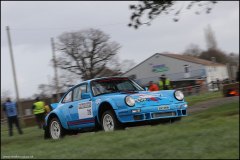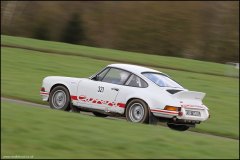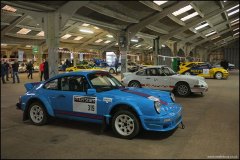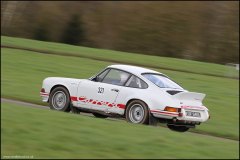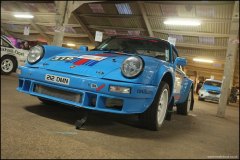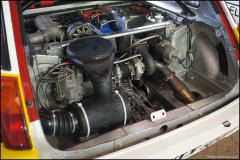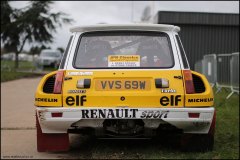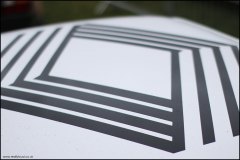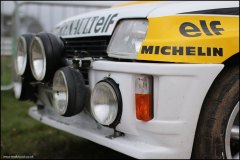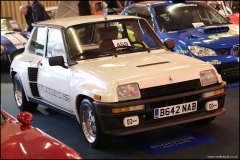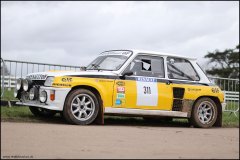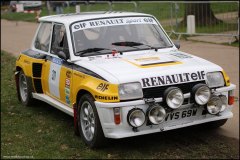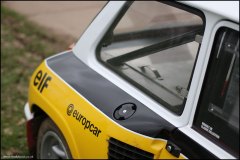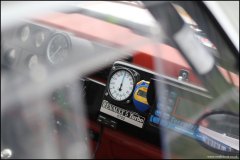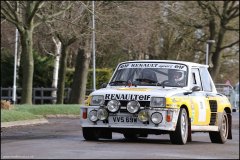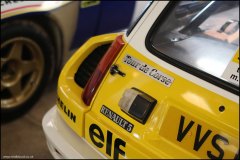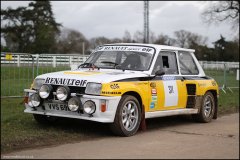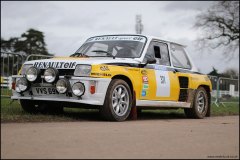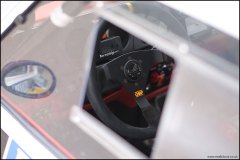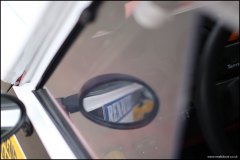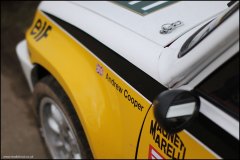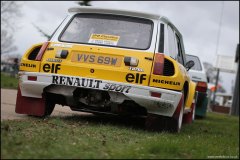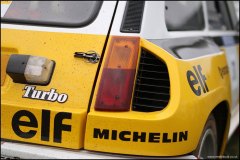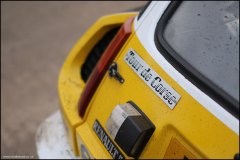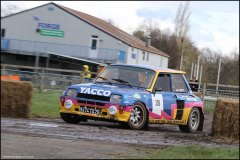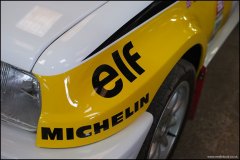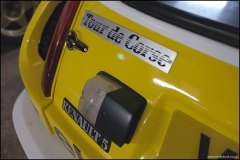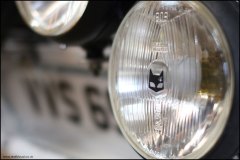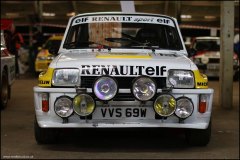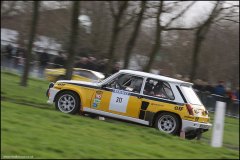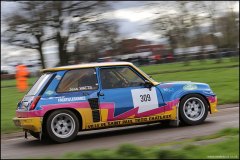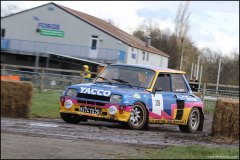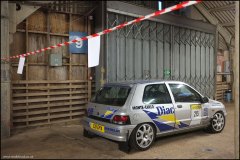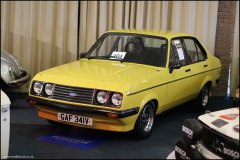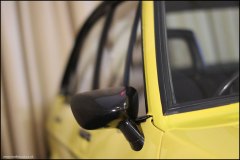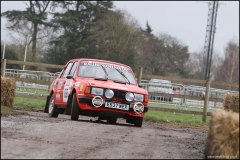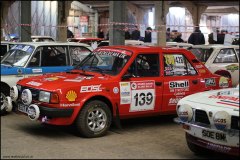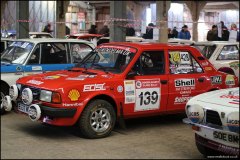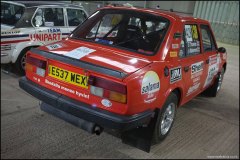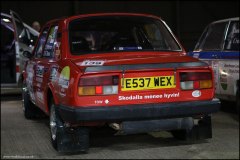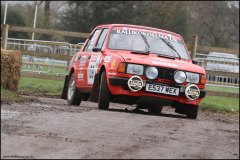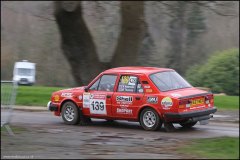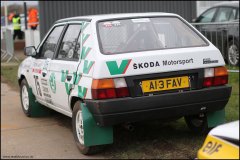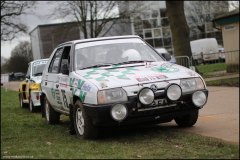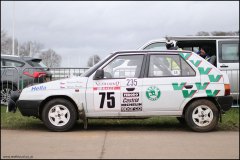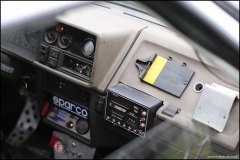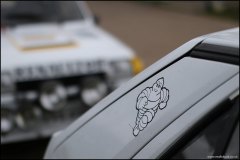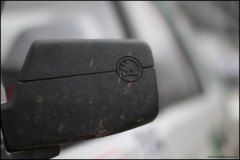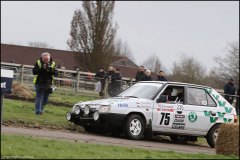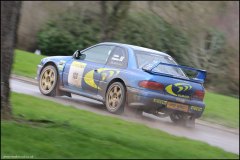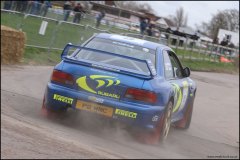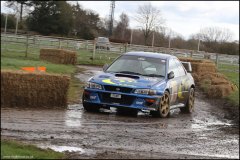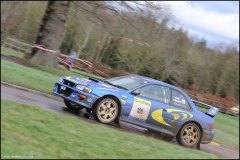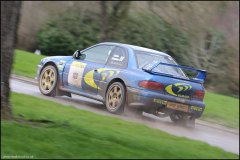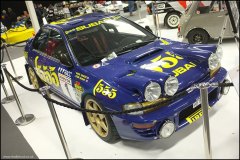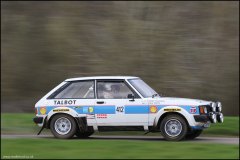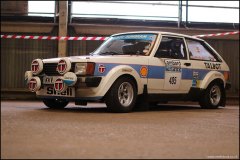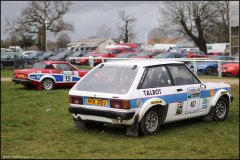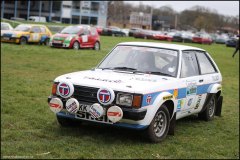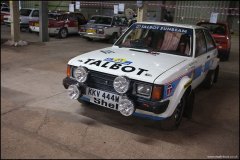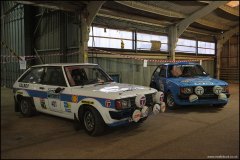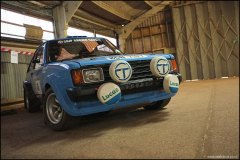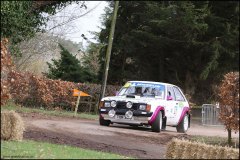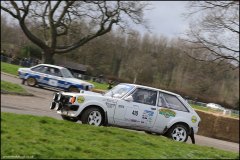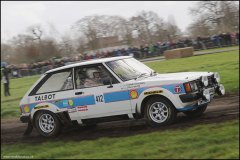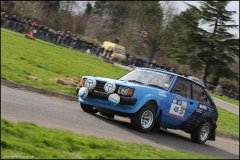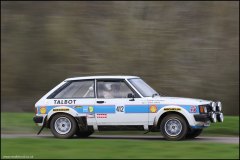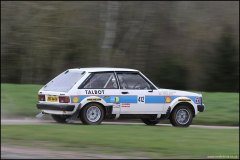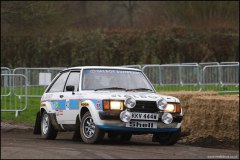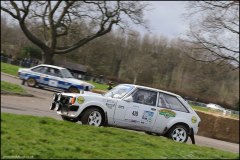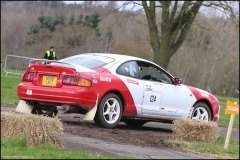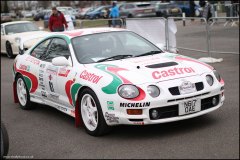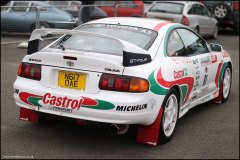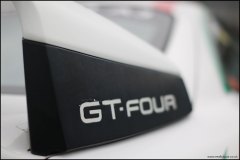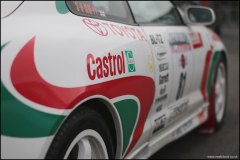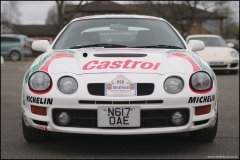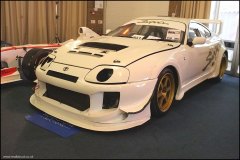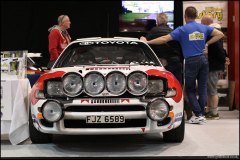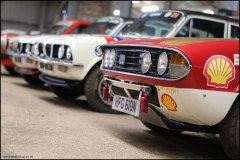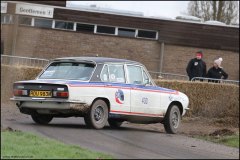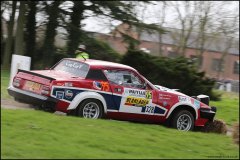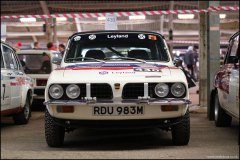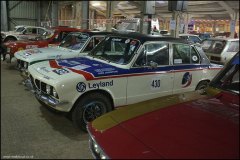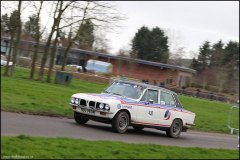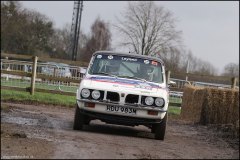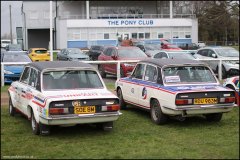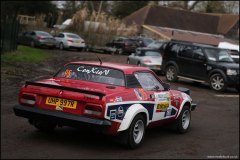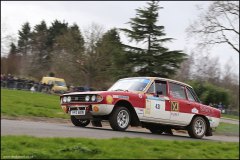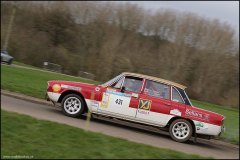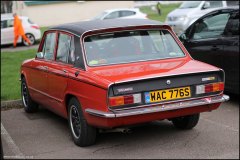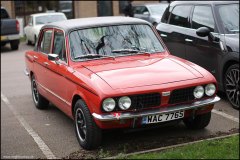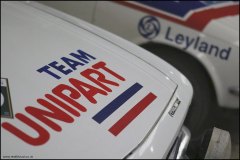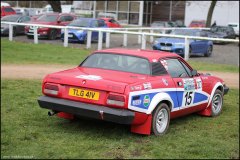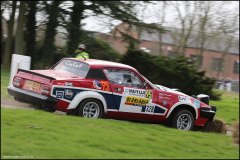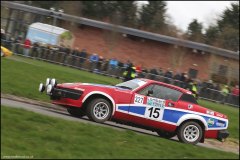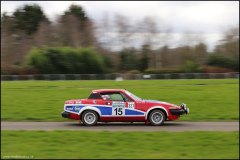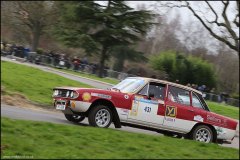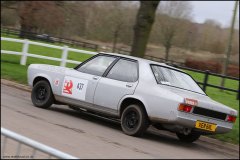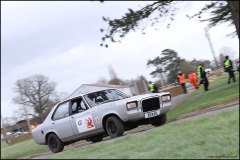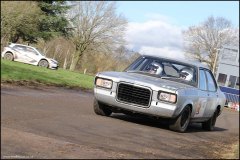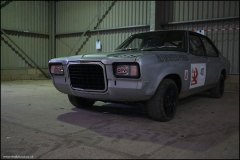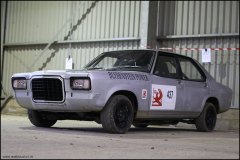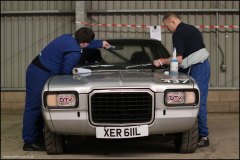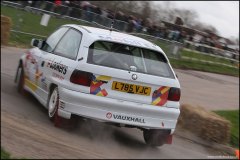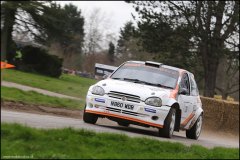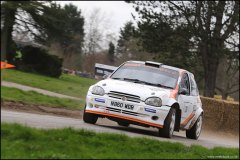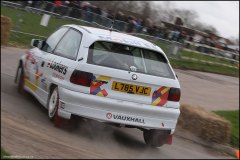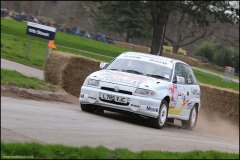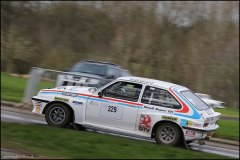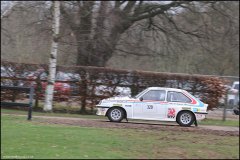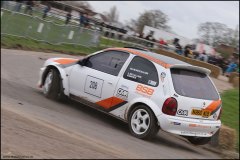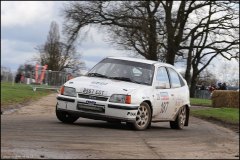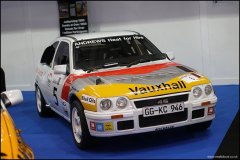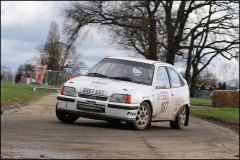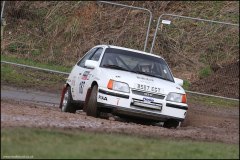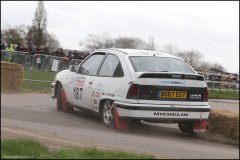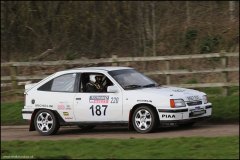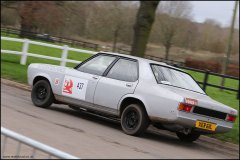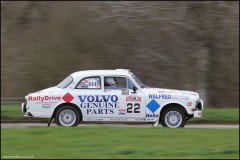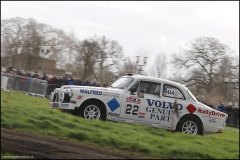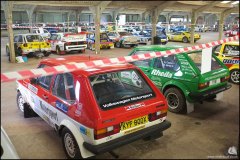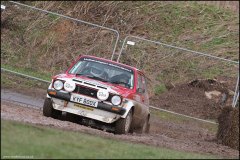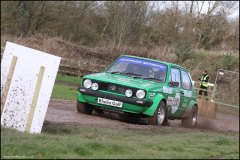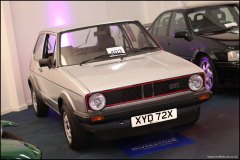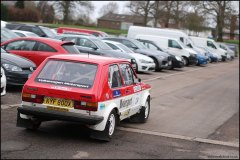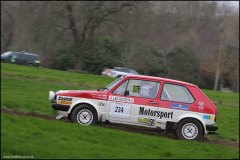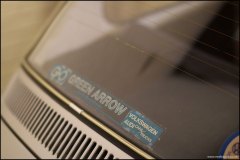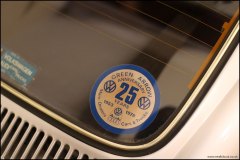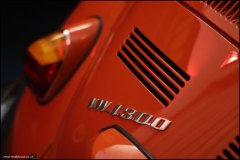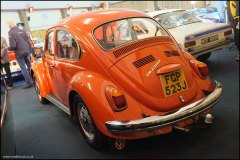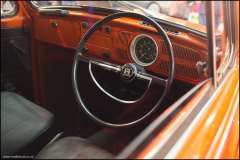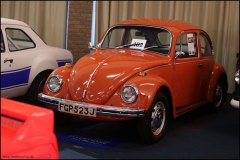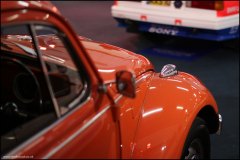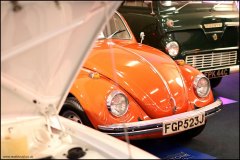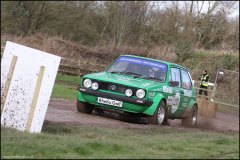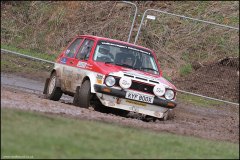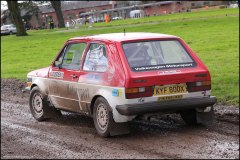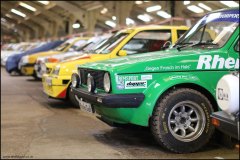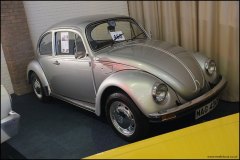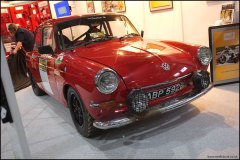Held at Stoneleigh Park in Warwickshire, the venue sits in the heart of Englands rural economy but its accessible location, exhibition buildings, facilities, mix of unmade tracks and tarmac avenues makes it the natural home for Race Retro.
Now in its 18th year, Race retro has become synonymous with exhilarating live rally stages with 140 ex-works and WRC cars thrashing their way around the tracks. The excitement is complemented by indoor displays of iconic cars including cars that have helped shape motorsports history. There is also opportunities to take in the live stage were prominent world class drivers are interviewed, as well as the opportunity to visit 250 specialist exhibitors.
Race Retro also allows the visitor to participate and become an important part of the shows success. This is why is it consistently rated as Europes no1 historic motorsport show, not only can you pitch questions to the likes of WRC or F1 drivers, you can also get up close to the rally cars, speak to the owners and even better, experience a first hand passenger seat experience of the cars whipping around the track.
The event is also well known for its related memorabilia for sale, with books, models and artwork for sale. Race Retro also offers something for those looking for specialist parts, were you can bag parts for your project or if you’re feeling a little more flush place a bid for a historic racing car at the Silverstone Auctions.
As ever with these things, you don’t want to read about it do you? Let see some photos of the weekend which captures elements of the occasion and offers you a glimpse into one of friendliest and accessible Historic Motorsports events of the year.
 Before we have a look at the main draw of the event – the rally stages, we’ll have a look at some of the highlights in the halls. The Classic 2CV Racing Club is an intensively competitive but cheap and friendly way to go racing. Almost impossible to roll too.
Before we have a look at the main draw of the event – the rally stages, we’ll have a look at some of the highlights in the halls. The Classic 2CV Racing Club is an intensively competitive but cheap and friendly way to go racing. Almost impossible to roll too.

The Goldstar stand featured an equally as delightful exhibit on their stand, this 1962 VW 1500 Notchback owned by Team Colorado. It was restored from the ground up in 1992, it is companion to the racing teams other well known rally car, a yellow and black 1958 VW Beetle.


You may be surprised to learn that this is the worlds fastest Jensen. The stroked 8.2-litre Turbo V8 engine with fibreglass body was recorded travelling at 143.887mph at the salt flats in Bonneville in 2018. The driver, Ian Northeast reckons it could have bettered that speed, had the gearbox not developed a malfunction. As a lovely side note, the original owners son got in touch with Ian, who told him that his father obtained permission by the Chief Police Constable to take the car on the M6 before the motorway was opened to the public in 1967. He reached 126mph, suggesting that this car has speed in its DNA. Ian and his team are hoping to return to Bonnville this year.


A celebration of the recent passing of Rally legend Russell Brookes was magnificently observed by an impressive display of his cars. He was associated with not only Opel, but provided significant victories for both Ford and Talbot. As a tribute to one of the UKs most famous Rally driver, Race Retro recognises his support for the event by his regular live rally participation. A dedicated live stage session was held in which friends, family and colleagues remembered him and his many achievements for the sport.


A Tale of two replicas. First off is a replica of Tony Ponds Nissan 240RS dominating the Pride of Paddock section. Charlie Gibbs car was subject to a painstaking four year restoration, where many parts had to be re-manufactured by scratch. This is no static piece though and is expected to see tarmac action later this year. Just across the isle is a Piper GTR Le Mans Replica, with its designer Tony Claydon standing proudly next to his creation. The car is based on the original 1969 car where it never got to race at Le Mans due to time constraints. Tony has had a long and varied career in product and car design and still dabbles with his creative pen.


With their own dedicated building, Silverstone Classics displayed their usual lavish array of cars, but as fitting for the event, it included some interesting cars suitable for the Race Retro event. First up is this remarkable and original Group N Daihatsu built for Will Hoy in 1985 – it has been left in exactly the same condition as it left the track almost 35 years ago. It sold for a very reasonable £6,075; perfect for an inspired up and coming driver.


This is not a private conversion carried out by an Escort fan, but one of 880 4 door RS2000s created for the Australian market. It differs from its European 2 door cousin as it uses a lower tune emission-strangled 2-litre Pinto lump, but is mated to a close ratio gearbox and alloy sump. It still held a positive racing credential and as a result both the 2 and 4 door versions were raced at Bathurst in the late ‘70s. Externally the Ozzie RS2000 used the cheaper plastic mirrors, while the Euro cars often had the favoured metal items. While this might It may lack the important chassis number, it certainly would be a conversation piece at the RS meet.


We’ll have a little wonder around the auto jumble areas next. One of the best things about places like this is the hunt, as you simply cannot guess what you may find. The banter, barter and bargaining adds to the experience.


Sunday provided the starting point for the Retro Classic tour, a 140 mile run through the picturesque countryside of Warwickshire and Oxfordshire and back for a selection of 30 cars. It provided a slightly more sedate variation of cars for the public to admire, yet still requiring the same level of planning and preparations.


Stoneleigh with its many avenues and car parks is scattered full of interesting machinery, with many visitors bringing in their classics to add to the occasion. A couple fo notable ‘spots’ included a 1937 Lagonda LG45 Rapide. It is one of 25 cars built and it spent first 55 years in the States, then brought back home the car underwent a total restoration and competed in the Mille Miglia. To bookend the rally pedigree, another import, one of the last Lancia Delta HF Integrale Evoluzione II is considered the ultimate version of Lancia most successful rally car. Later versions were not as competitive, but the company continued to capitalise on the eight WRC wins and six consecutive manufactures titles by releasing several production runs of the car.


Race Retro has a Cowshed. Not many motorsports events can boast that. One half serves as an area for the Autojumble, the other half becomes a storage facility for the cars for the weekend. This acts like a living museum, where you can inspect the cars and chat to the driver-owners. After the two 2 hour daily events, there is a small window of time for repairs and fettling before the sheds are locked up for the night.


The Cowshed provides an opportunity for photographic moments to capture over a hundred rally cars in one spot. The Ferrari 308 GTB was one of two yellow Ferraris at the event, both are regulars at Race Retro. The glass fibre cars were quite competitive on the tarmac events during the early 80’s. Comparable to the Lancia Stratos, the Ferraris short stroke V8 300bhp engines helped it become Ferrari most successful rally car.


The cars line up before their run. The cars are here simply for a blast around the track, rather than any competition element but it does allow owners to try their cars out in anger – the majority of cars are used regularly on events. The pit lane provides an opportunity for the cars to cool down and for the drivers to grab a bacon sarnie and coffee.


Cars are grouped up into 4 group sections, Group 1 are the more modern examples starting off the days proceedings, followed by mostly FWD club sports cars. Group 3 are the Group B cars and finally a mix of historic, WRC and club sports cars for the final group. The organisers encourage driving courtesy and more often than not, drivers of less powerful car often give way to the 250+ bhp monsters.


Geoff Maybanks Toyota Corolla Levin was a first time attendee at Race Retro, the car was one of a pair of TE20’s sourced from New Zealand. The 2nd generation Corolla was thrust into the limelight by Hannu Mikkola’s win at the 1000 Lakes event in 1975, and Geoffs car has been finished in tribute to that car. Similar in many respects to the MK1 and MK2 Escorts, the Corolla rally success was put on on hold due to Toyotas insistence in using the bigger Celica as its works car from the mid ’70s. This meant that that Corolla had to wait another twenty years before carrying on the models rally success.


Not to be outdone by the historic Corolla, there was also Datsun’s most recognisable car at Race Retro. Nicholas Gills 240Z is another homage to the Japanese’s ability to promote their cars via rally sports. Finished in the iconic Safari Rally livery, the 240Z like several other valuable cars used not he track, acquired some minor damage but adds to the authenticity of the cars rally scars. The 240Z was built for long endurance rallying which resulted in Datsun producing a very strong car with a lot of charisma, but remains to this day a difficult and heavy car to drive in rallysports.


Skoda were well represented at the event, with three generations of cars seen at the event. The Estelle was a potent rally tool in the ‘80s where its well known to have similar handling characteristics to the Porsche 911. The Estelle went on to not only to compete in 126 WRC events but also completed 100 of those races – a particularly high ratio of finishes. The successor to the rear engined car, the Favorit continued its success with a series of class and category wins. Two Subaru engined Skodas Fabia Evolves (Skodaru) were also participating in the event.


For sheer entertainment, two Vauxhalls provided the crowd with some spectacular damp road action. This resulted in several damaged hay bales and off-road corrections. The Victors sideways brash nature would have made Gerry Marshall proud. The other vauxhall was actually a Chevrolet Firenza Can-Am, a South African version of the Vauxhall Firenza powered by a Can-Am V8 302ci (4.9 litre) engine. It was developed for racing, but the rules speculated that 100 CanAms had to be built to homologate them. They were said to be able to reach 0-60 in 5.4 seconds and run out of steam at 140mph!


One of the main draws to the event is the promise of seeing Group B cars in the wild, and as ever this year did not disappoint. The iconic Peugeot 205 T16 was consistently popular with the public, but the car when it started its racing career in 1983 suffered from turbo lag issues. Peugeots commitment to Group B was rewarded with 16 WRC victories. The MG Metro 6R4 rally car was created in a similar mould, but never reached its potential due to teething issues with the V6 engine. The banning of Group B due to several tragic crashes and accidents in 1986, meant many Group B cars were never used and therefore sold privately. This example has lost its original Williams Grand Prix Engineering engine and has been replaced by a Honda engine, which in the grand scheme of things is probably a shrewd investment.


BMC competition cars are always well represented at Race Retro, with a section of well known and loved cars being used as they were intended. It would be terribly rude to add up the tally of the age of the cars with their respective owners, but it proves that these BMC machines (and their drivers) are incredibly durable and marks an era in British Rally sport history when the corporation was well regarded in rally sport.


There was a huge FWD club sports representation this year, with younger drivers showing off their masterful control and ability. The 205 is perfect for motorsports, their agility and roadholding makes it an obvious choice as a rally car; however prices of decent 205 GTI’s are creeping up. So the next best thing could well be the K11 Nissan Micra – still plentiful, cheap and tunable, they represent a perfect entry point into rallysports.


Brothers Antonio and Dominic Giovinazzo and their Alfa 155 have regularly been participating in clubsport events for twenty years. Looking more like a BTTC car, it regularly competes at Race Retro as well as hillclimbs and tarmac events. While ground clearance on some sections of the track is an issue, the well maintained car benefits from the Brothers experience in rally sports and their antics delighted the Race Retro crowds.


Etched into the minds of most rally sport fans of a certain age, the RWD Escort are sought after as rally cars with many being thrown around as intended. Not surprisingly it was the most commonly active type of model at the event, with 16 MK1 and MK2 Escorts let loose on the circuit over the weekend. The Escort became the car of the RAC rally, with an unbeaten eight win run. Ford pulled out of rallysports just before the car was replaced, but its success continued well into the ’80s and ‘90s thank to privateers.

Goodnight rally cars. Thanks for coming and we can’t wait to see you again next year!




